Physics

What's next after the success of the Large Hadron Collider and its success in finding the Higgs boson, the so-called God Particle?
America begged off the LHC because of a failure to keep the Superconducting Super Collider realistic in the early 1990s. Critics of funding the LHC knew that it was going to take an International Linear Collider (ILC) to interpret whatever the LHC found. Physics was getting more obscure and more expensive and less practical. The rush to Big Science starves lots of other experiments, as American scientists have discovered with the James Webb Space Telescope cost…

Einstein’s God in physics
In contrast to the known religious with human prayers as main attribute, Einstein’s God is a sincerely scientific one stimulating new research “I want to know God's thoughts... the rest are details”. Its distinguished substance implicitly ‘personalizes’ the answer to the ultimate “Why” of the empirical and math regularities in physics, principally independent of science successes. Without sense of false embarrassment, it is a satisfaction psychological…
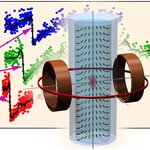
The mass of the Higgs boson reported at the Large Hadron Collider in 2012, 125 GeV, looked lighter than the expected energy scale, about 1 TeV, say researchers at Aalto University in Finland, who now propose that there is more than one Higgs boson, and they are much heavier than the consensus.
New CERN experiments at 0.75 TeV suggested evidence of a second Higgs in that region and some scrambled to embrace it. Dr. Tommaso Dorigo of Science 2.0 dismissed it as a spurious 750 GeV signal observed by ATLAS and CMS in their mass spectra of photon pairs, no different than other spurious signals…

As a follow-up of yesterday's post on the very opportune Pomeranchuk prize given to Stan Brodsky, I would like to report here on a funny anecdote Stan related to me today. The anecdote is interesting to all of us who believe the world of physics research is fully trans-national - well, it is, but there is apparently some more work to do to improve the situation further.The Pomeranchuk prize was announced yesterday by SLAC, but was actually given to Stan last November (in fact it is the 2015 prize). He got invited by ITEP in Moscow to receive it, but he is paid by the US Department of Energy,…
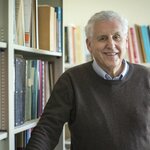
I was quite happy to hear today that Stan Brodsky, a professor of particle physics and astrophysics at Stanford University, has received together with Victor Fadin the 2015 Pomeranchuk Prize from the Russian Institute for Theoretical and Experimental Physics (ITEP) of Moscow. Stan is a great guy and his contributions to QCD are of wide range. The prize recognizes three distinct contributions to the theory of strong interactions. The latter one, light-front holography, is a bit too advanced a topic for this blog to be described in detail; yet it is the focus of Stan's most…

Normal
0
MicrosoftInternetExplorer4
Looking for new physics in SM Higgs sector by semi-empirical analysis
of its many parameters
After the Higgs boson discovery, LHC
results at the end of 2015 support the Standard Model of known elementary
particles. Higgs sector is the least advanced one in the SM.
There are two ways of developments – theoretical and semi-empirical. The main contents
of the latter is looking for physically meaningful regularities of the empirical parameter ratios between masses and between mixing angles of particles in flavor groups of the…
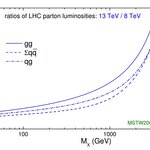
Two weeks have passed since the CERN Jamboree of December 15th, which will be always remembered for the spurious 750 GeV signal observed by ATLAS and CMS in their mass spectra of photon pairs. It is unfortunate, as dozens of very important new measurements and search results were shown by the experiments on that occasion, but they all got overshadowed by a fluctuation.Even more annoying to some is the fact that the press picked up and overhyped the news, as is quite common in similar circumstances. I personally do not mind, as I belong to the minority who considers this in general a…
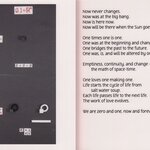
Here is my holiday card for 2015, a tradition of mine going back to 1990. Enjoy.
On the back...
I also include a summary of the year. Here is the stuff on my research efforts:
Hello:It was quite the remarkable year, nerd-wise, at least only to me (as is the way). Back in the Fall of 2012, I had to give up on a proposal for gravity using quaternions and hypercomplex numbers. So sad, no more t-shirt sales. I flopped around for three years, trying a few ideas that fell over easily. This Spring, I remembered an observation I probably made in my first week of playing with…
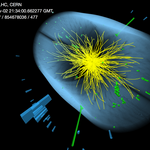
[The article below is courtesy Eilam Gross. Eilam is a physicist from the ATLAS experiment and has been convener of the Higgs group there. I am very happy to host a guest post from him on the exciting topic below...]
It’s been three years
since the discovery of the Higgs Boson with the Large Hadron Collider (LHC) in
Geneva. Two beams of protons are accelerated to speeds approaching the speed of
light and colliding with energy densities similar to those existed fractions of
a second after the big bang. The discovery of the Higgs Boson filled in the
last vacancy in the…
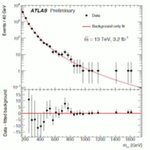
Marumi Kado started his talk by saying he will only present new results based on the full 2015 13 TeV pp collision dataset.For Run 2 there have been a large number of improvements to the detector.
Also the trigger has been improved, with a new central trigger processor. Reconstruction software also was improved significantly.
Marumi spent a long time describing the retuning of the detector and the performance in reconstruction of impact parameters, physics objects, and the like. The physics modellinghas been verified in several control samples of dibosons, top pairs, etcetera.
Marumi…